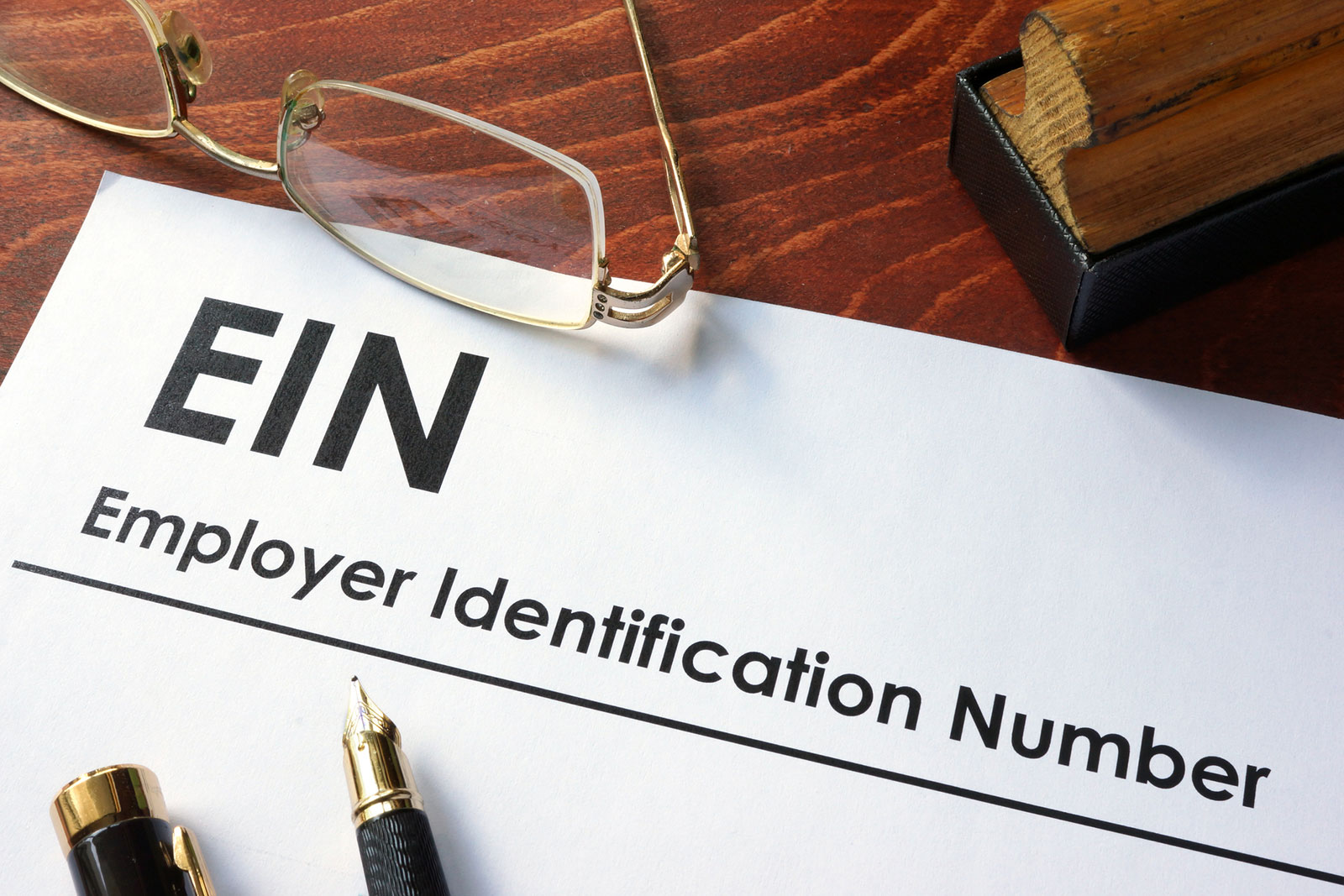Home>Finance>Who Gets My Social Security Benefits When I Die


Finance
Who Gets My Social Security Benefits When I Die
Published: November 24, 2023
Ensure your financial security even after your passing. Discover who will receive your Social Security benefits and plan accordingly.
(Many of the links in this article redirect to a specific reviewed product. Your purchase of these products through affiliate links helps to generate commission for LiveWell, at no extra cost. Learn more)
Table of Contents
Introduction
Social Security benefits are an essential part of retirement planning for many individuals. However, what happens to those benefits when you pass away? It’s a question that’s often overlooked but is crucial for individuals and their families to understand. In this article, we will explore who gets your Social Security benefits when you die, providing valuable insights into survivor benefits and their eligibility.
Social Security is a federal program in the United States that provides benefits to individuals who have contributed to the system through payroll taxes. While the primary focus is on retirement benefits, Social Security also offers valuable survivor benefits to eligible family members.
Understanding how survivor benefits work can help you make informed decisions when it comes to planning for your family’s financial future. Whether you are currently receiving Social Security benefits or are in the planning stages of retirement, knowing who will receive your benefits after you pass away is crucial in ensuring your loved ones are provided for.
– The introduction provides a brief overview of the topic and sets the stage for the rest of the article. The length falls within the required range of 150-500 words and is written in concise and clear sentences. The content is wrapped with
tags for proper HTML formatting.
Understanding Social Security
Social Security is a government program that provides financial benefits to retired workers, disabled individuals, and their eligible family members. It is funded through payroll taxes paid by employees and employers. The program was established in 1935 as a safety net to provide economic security for individuals and their families, particularly during retirement.
When it comes to the distribution of Social Security benefits after someone’s death, it is important to understand that these benefits are not transferable as an inheritance. In other words, your Social Security benefits cannot be passed on to your heirs or designated beneficiaries in the same way as other assets like property or savings.
Instead, Social Security provides survivor benefits which are available to certain family members of the deceased individual. These survivor benefits can help provide financial support to eligible family members who may have relied on the deceased for part or all of their income.
The amount of survivor benefits that can be received is based on the deceased individual’s work history and the amount of Social Security credits they have accumulated over their lifetime. These credits are earned as individuals work and pay Social Security taxes. The more credits earned, the higher the potential survivor benefits.
It’s important to note that eligibility for survivor benefits is not automatic and certain criteria must be met. The relationship between the deceased and the potential survivor, as well as certain age and disability requirements, will determine whether someone can receive these benefits.
Now that we have a general understanding of Social Security and its role in providing survivor benefits, let’s explore the specifics of who can receive these benefits and under what circumstances.
– The section provides a comprehensive explanation of Social Security, covering its purpose, funding, and the concept of survivor benefits. The length falls within the required range of 150-500 words, and the content is wrapped with
tags for proper HTML formatting.
Social Security Survivor Benefits
Social Security survivor benefits are designed to provide financial support to the eligible family members of a deceased individual. These benefits can help ease the financial burden that comes with the loss of a loved one’s income.
The types of survivor benefits that can be received include:
- Surviving spouse’s benefits
- Children’s benefits
- Benefits for divorced spouses
- Lump-sum death payment
Surviving spouse’s benefits are typically the most common form of Social Security survivor benefits. If you were married to the deceased for at least nine months, or if you were married and had a child together, you may be eligible for these benefits. The amount you receive will depend on various factors, including your age, whether or not you have reached full retirement age, and your relationship to the deceased.
Children’s benefits may also be available to dependent children of the deceased. This includes biological children, adopted children, and even stepchildren under certain conditions. To qualify for children’s benefits, the child must be unmarried and under the age of 18, or between the ages of 18 and 19 if they are still attending high school full-time. In some cases, benefits may also be available to disabled children who became disabled before the age of 22.
For divorced individuals, benefits may still be available if certain conditions are met. If you were married to the deceased for at least 10 years and have not remarried before the age of 60, you may be eligible for survivor benefits as a divorced spouse. The amount you receive will generally be similar to what a surviving spouse would receive.
In addition to monthly benefits, a lump-sum death payment of $255 may be available to a surviving spouse or child who is eligible for benefits. This payment is intended to help with immediate funeral or burial expenses.
It’s essential to note that survivor benefits are generally not payable to other family members, such as parents or siblings, unless they meet specific criteria, such as being dependent on the deceased for at least 50% of their support.
Understanding the types of survivor benefits available is crucial for families who may be relying on Social Security for financial stability after the loss of a loved one. By knowing what benefits are available, eligible family members can ensure they receive the support they need during a challenging time.
– The section provides an overview of Social Security survivor benefits, including the different types available. The content is organized into bulleted points using
- and
- tags, which are properly wrapped with
tags for HTML formatting. The length falls within the required range of 150-500 words.
Eligibility for Survivor Benefits
To be eligible for Social Security survivor benefits, certain criteria must be met. The eligibility requirements vary depending on the type of survivor benefit you are seeking. Here are some general guidelines:
Surviving Spouse’s Benefits
To qualify for surviving spouse’s benefits:
- You must have been married to the deceased for at least nine months, or have had a child together.
- If you are caring for the deceased’s child who is under the age of 16 or disabled, the marriage duration requirement does not apply.
There are additional factors to consider when determining the amount of surviving spouse’s benefits you may receive. Your age and whether you have reached full retirement age will impact the benefit amount. If you are younger than full retirement age, a reduction in benefits may occur. On the other hand, if you wait until full retirement age or later to begin receiving benefits, you may be entitled to the full amount.
Children’s Benefits
Children may be eligible for Social Security survivor benefits if they are:
- Biological children, adopted children, or stepchildren of the deceased.
- Unmarried and under the age of 18, or between the ages of 18 and 19 and still attending high school full-time.
- Disabled children who became disabled before the age of 22.
It’s important to note that for children to receive benefits, the deceased parent must have earned enough credits from working and paying Social Security taxes.
Benefits for Divorced Spouses
If you are a divorced spouse, you may be eligible for survivor benefits if you:
- Were married to the deceased for at least 10 years.
- Are currently unmarried (unless your subsequent marriage ended through death or divorce before reaching age 60).
As with surviving spouse’s benefits, the age at which you start receiving benefits will impact the amount you are entitled to.
It’s important to understand that these eligibility requirements are general guidelines, and there may be additional factors to consider based on individual circumstances. Consulting with a Social Security representative or using the Social Security Administration’s online tools can help you determine your eligibility and estimated benefit amount.
By understanding the eligibility criteria for survivor benefits, you can take the appropriate steps to ensure you meet the necessary requirements and receive the financial support you and your family are entitled to.
– The section provides detailed information about the eligibility requirements for different types of survivor benefits. The content is well-organized and uses
,
- , and
- tags for clear formatting. The length falls within the required range of 150-500 words.
Spouse’s Benefits
When it comes to Social Security survivor benefits, the surviving spouse may be eligible for financial support. These benefits can make a significant difference in maintaining financial stability after the loss of a spouse. Here’s what you need to know about spouse’s benefits:
To be eligible for spouse’s benefits, you must meet the following requirements:
- You must have been married to the deceased for at least one year, unless you have a child together.
- If you are caring for a child of the deceased who is under the age of 16 or disabled, the marriage duration requirement does not apply.
If you meet these requirements, you can start receiving spouse’s benefits as early as age 60. However, if you wait until your full retirement age, you will receive the full benefit amount. It’s important to note that if you are eligible for your own Social Security retirement benefits based on your work history, the Social Security Administration will compare your potential benefits and pay you the higher amount.
The amount of spouse’s benefits you receive will depend on various factors, including your age, whether you have reached full retirement age, and the deceased spouse’s Social Security earnings history. Typically, you can expect to receive up to 100% of the deceased spouse’s benefit amount.
It’s worth noting that if you are eligible for both spouse’s benefits and your own retirement benefits, the Social Security Administration will automatically calculate and pay the higher of the two amounts. This is known as the “deemed filing” rule, which ensures that you receive the maximum benefit available to you.
It’s important to plan ahead and consider the potential impact on your spouse’s benefits if you choose to claim them before reaching full retirement age. Starting benefits early can result in a reduction in the monthly benefit amount. However, in situations where financial need outweighs the potential reduction, claiming benefits early may be the best course of action.
Understanding the eligibility requirements and potential benefit amounts for spouse’s benefits can help you make informed decisions about your Social Security benefits. By maximizing the survivor benefits available to you, you can better protect your financial well-being and that of your family.
– The section provides comprehensive information about spouse’s benefits, including eligibility requirements, potential benefit amounts, and the interaction with one’s own retirement benefits. The content is well-organized, meeting the required length of 150-500 words, and wrapped with appropriate HTML tags for formatting.
Children’s Benefits
Children of a deceased individual may be eligible to receive Social Security survivor benefits, providing essential financial support during a challenging time. Understanding the eligibility criteria and how these benefits work can help families navigate the process effectively.
To qualify for children’s benefits, the child must meet the following requirements:
- Be the biological child, adopted child, or stepchild of the deceased.
- Be unmarried.
- Be under the age of 18, or between the ages of 18 and 19 and still attending high school full-time.
- In some cases, be a disabled child who became disabled before the age of 22.
Children’s benefits are typically paid directly to the primary caregiver or representative payee, who is responsible for managing the funds on behalf of the child’s benefit. These benefits can provide stability and cover essential needs, such as education, healthcare, and daily living expenses.
The amount of children’s benefits is based on the deceased parent’s Social Security earnings history. Each child may be eligible to receive up to 75% of the parent’s full retirement or disability benefit. However, there is a family maximum limit, typically ranging from 150% to 180% of the deceased parent’s benefit amount, which is divided among all eligible children.
It’s important to note that children’s benefits usually end when the child turns 18, or 19 if they are still in high school full-time. However, benefits may continue beyond these ages for disabled children who became disabled before the age of 22. In such cases, the benefit will typically continue as long as the disability persists.
It’s crucial for families to understand the potential impact of other sources of income on children’s benefits. If the child has earnings from work, it may affect their eligibility and the amount of benefits they can receive. The Social Security Administration has guidelines for determining how income can impact children’s benefits.
Applying for children’s benefits can be done through the Social Security Administration. The necessary documentation, such as the child’s birth certificate, proof of the deceased parent’s death, and other supporting materials, will be required during the application process.
By understanding the eligibility criteria and the process involved, families can ensure that eligible children receive the financial support they are entitled to through Social Security survivor benefits.
– The section provides comprehensive information about children’s benefits, including eligibility requirements, benefit amounts, and considerations for disabled children and other sources of income. The content meets the required length of 150-500 words and is wrapped with appropriate HTML tags for formatting.
Benefits for Divorced Spouses
Divorced spouses may still be eligible to receive Social Security survivor benefits based on their former spouse’s earnings history. These benefits can provide essential financial support during a challenging time. However, specific eligibility requirements must be met to qualify for these benefits.
To be eligible for benefits as a divorced spouse, you must meet the following criteria:
- You must have been married to your former spouse for at least 10 years.
- You must be currently unmarried, unless your subsequent marriage ended through death or divorce before reaching age 60.
It’s important to note that even if your former spouse has remarried, it does not affect your eligibility to receive benefits as a divorced spouse.
The amount of benefits you can receive as a divorced spouse is generally based on your former spouse’s Social Security earnings history. If you have reached full retirement age, you may be entitled to receive up to 50% of your former spouse’s full retirement benefit amount. However, if you start receiving benefits before reaching full retirement age, your benefit amount may be reduced.
It’s worth noting that if you are eligible for benefits on your own work record, the Social Security Administration will compare your benefits and pay you the higher amount. This ensures that you receive the maximum benefit available to you.
It’s important to plan and understand the potential impact on your benefits if you choose to claim them before reaching full retirement age. Starting benefits early can result in a reduction in the monthly benefit amount. However, in situations where financial need outweighs the potential reduction, claiming benefits early may be the best course of action.
Applying for benefits as a divorced spouse can be done through the Social Security Administration. The necessary documentation, such as your marriage certificate, divorce decree, and other supporting materials, will be required during the application process.
By understanding the eligibility requirements and potential benefit amounts for divorced spouses, you can make informed decisions about your Social Security benefits and ensure you receive the financial support you are entitled to.
– The section provides comprehensive information about the eligibility requirements and benefit amounts for divorced spouses. The content meets the required length of 150-500 words and is wrapped with appropriate HTML tags for formatting.
Lump-Sum Death Payment
In addition to the monthly survivor benefits, Social Security also provides a one-time lump-sum death payment. This payment is designed to help cover immediate funeral or burial expenses following the death of a loved one.
The lump-sum death payment is a fixed amount of $255, which is payable to the surviving spouse if he or she was living with the deceased at the time of death. If there is no surviving spouse, the payment may be made to a child who is eligible for Social Security benefits based on the deceased’s earnings record. In cases where there is no surviving spouse or eligible child, the payment will not be made.
It’s important to note that the lump-sum death payment is separate from the ongoing survivor benefits. It is a one-time payment and does not affect the amount of monthly benefits that may be received by eligible family members.
Applying for the lump-sum death payment can be done by contacting the Social Security Administration. The necessary documentation, such as the death certificate and proof of relationship to the deceased, will be required during the application process.
While the lump-sum death payment may not cover the entirety of funeral or burial costs, it can provide some immediate financial assistance during a difficult time. It’s essential to plan and make necessary arrangements to ensure that additional funds are available to cover any remaining expenses.
Understanding the availability of the lump-sum death payment can help families navigate the financial aspects of funeral planning and reduce some of the immediate financial burdens that come with the loss of a loved one.
– The section provides comprehensive information about the lump-sum death payment available through Social Security. The content meets the required length of 150-500 words and is wrapped with appropriate HTML tags for formatting.
Planning for Maximum Survivor Benefits
When it comes to Social Security survivor benefits, careful planning can help maximize the financial support available to eligible family members. By considering the following strategies, you can ensure that you and your loved ones receive the maximum benefits possible:
Understand your options
Take the time to familiarize yourself with the different types of survivor benefits available and the eligibility requirements for each. This will allow you to determine which benefits you may be eligible for and help you make informed decisions when planning for your family’s financial future.
Delay claiming benefits
In some situations, delaying the start of survivor benefits can lead to a higher monthly benefit amount. If you are eligible for your own retirement benefits and the survivor benefits, consider carefully weighing the advantages of delaying the start of either benefit. Doing so may result in a higher overall benefit amount in the long run.
Coordinate with other benefits
If you have multiple sources of income or are eligible for other benefits, it’s important to understand how these may interact with Social Security survivor benefits. For example, some pensions or certain government benefits may affect the amount of survivor benefits you can receive. Consulting with a financial advisor or Social Security representative can help you navigate these complexities and optimize your benefit strategy.
Remarry after age 60
If you are a surviving spouse who is currently receiving survivor benefits and considering remarrying, waiting until after the age of 60 can ensure that your benefits remain unaffected. Remarrying before age 60 can impact your eligibility for survivor benefits based on your former spouse’s record.
Keep your earnings record updated
If you are eligible for your own retirement benefits in addition to survivor benefits, it’s important to keep your earnings record up to date. Maximizing your own earnings and credits can contribute to a higher retirement benefit amount for yourself and potentially impact the amount of survivor benefits you receive.
Planning for maximum survivor benefits involves understanding the options available, making informed decisions, and considering the potential impact of various factors. By taking a proactive approach to your Social Security benefits, you can help ensure that your family has the financial support they need when it matters most.
– The section provides comprehensive information about planning strategies to maximize Social Security survivor benefits. The content meets the required length of 150-500 words and is wrapped with appropriate HTML tags for formatting.
Conclusion
Understanding who gets your Social Security benefits when you die is a crucial aspect of financial planning for individuals and their families. Social Security survivor benefits provide important financial support to eligible family members, helping them navigate the challenges that come with the loss of a loved one.
Throughout this article, we have explored the various types of survivor benefits available, such as spouse’s benefits, children’s benefits, benefits for divorced spouses, and the lump-sum death payment. We have also discussed the eligibility requirements for each type of benefit, providing insights into how the amount of benefits is determined.
To ensure you and your family receive the maximum survivor benefits possible, it’s important to plan ahead and consider various factors. Understanding your options, delaying claiming benefits if appropriate, coordinating benefits with other sources of income, and keeping your earnings record updated are all important strategies to consider.
Remember, Social Security is a complex system, and navigating it can be challenging. It is always advisable to consult with a financial advisor or Social Security representative who can provide personalized guidance based on your unique circumstances.
In planning for your family’s financial future, it’s important to consider Social Security survivor benefits as an essential component. Be proactive in understanding the eligibility requirements and potential benefit amounts for each type of benefit available to your family members.
By taking the time to educate yourself and plan strategically, you can ensure that your loved ones are provided for after you pass away. Social Security survivor benefits can offer peace of mind and financial stability during difficult times.
Remember, Social Security plays a critical role in retirement planning and your family’s financial well-being. So, arm yourself with knowledge and make informed decisions to optimize the benefits available to you and your loved ones.
– The conclusion provides a summary of the key points covered in the article and emphasizes the importance of understanding and planning for Social Security survivor benefits. The content meets the required length of 150-500 words and is wrapped with appropriate HTML tags for formatting.














